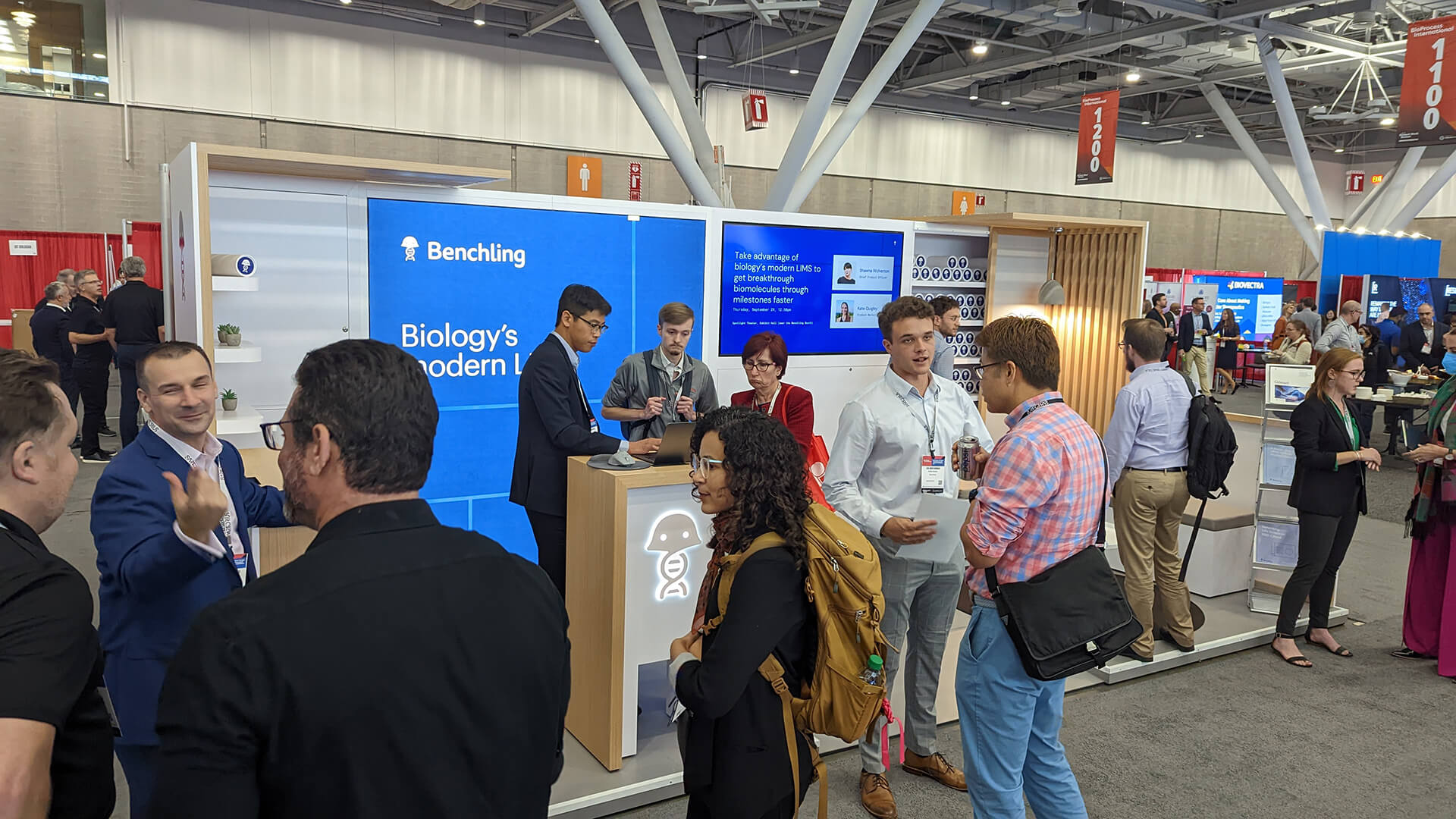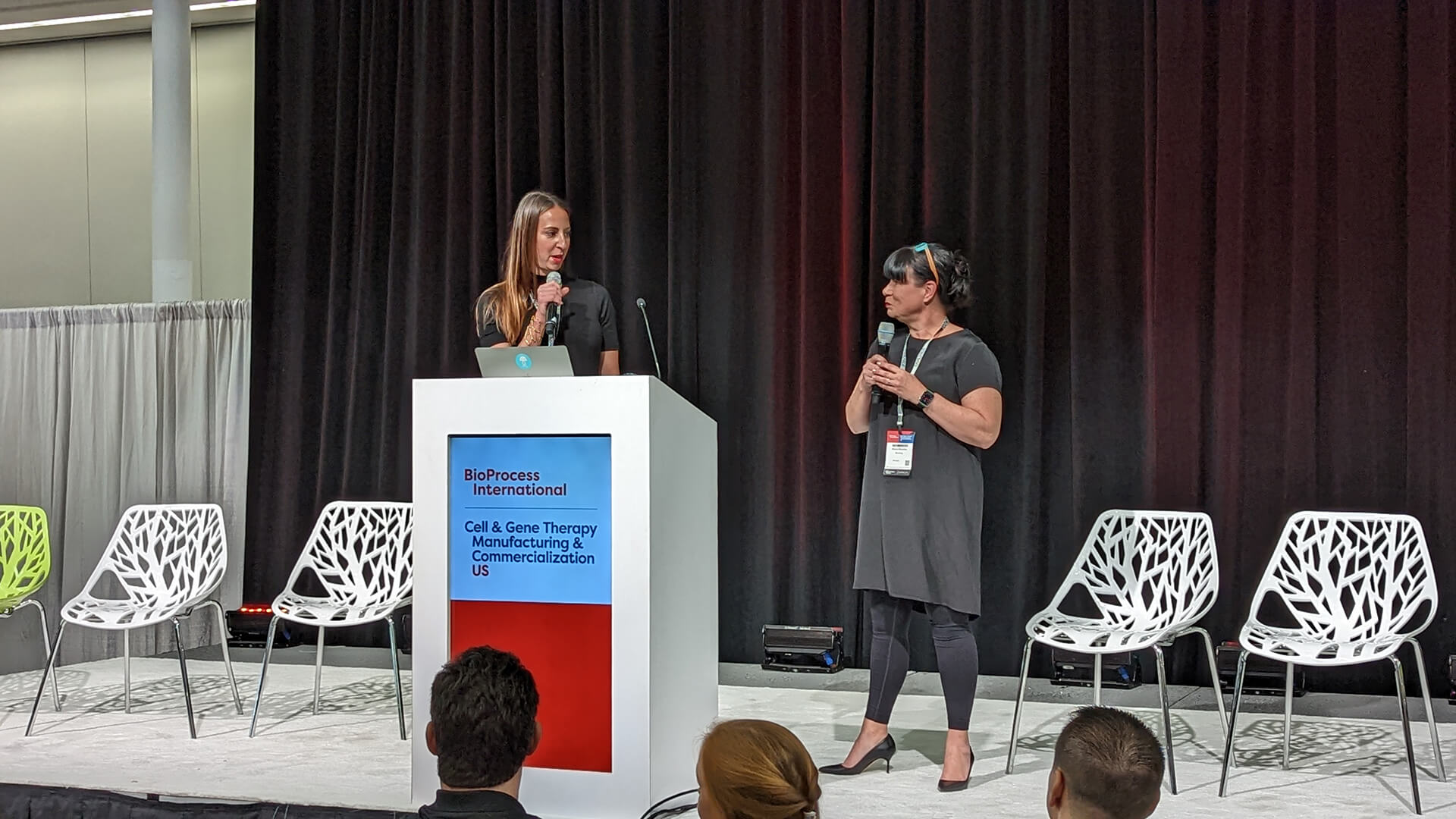BioProcess International: Perspectives from the 2022 Conference

What a great week at BioProcess International 2022!
Benchling was honored to be among so many folks maturing and growing the infrastructure for bioprocess development of cell therapies, gene therapies, mABs, AAVs, and so many other innovative modalities. It’s clear that the industry shares a spirit of collective learning, that what one organization is figuring out how to build up and / or build out will contribute to our shared ability to deliver breakthrough biomolecules as products to market. We’re truly all in this massive intelligence and capacity-building challenge together.
The Benchling team synthesized our shared learnings, and found three common themes arose from across the presentations and booth discussions: harnessing data, balancing priorities, and adopting innovation.

Big themes
Harnessing data
Most of the scientists who presented their findings at the conference showed how bioprocess teams find signals from the noise in their respective data. We all want to find key markers of stability, purity, viability, potency, etc. as quickly and easily as possible. This requires digital tools that can collate and contextualize information across an ecosystem of scientists and solutions, including experimental, sample, operational, and analytical data. Yet capturing, organizing, and analyzing the data that goes into and comes out of each process still remains a daunting task.
Opportunities here focused on 1) simply capturing everything in both structured and unstructured formats, and 2) getting the right talent to help utilize this big data. The answer to this seems to lie in having data scientists who can work closely with the bioprocess development teams using the best software to integrate information across teams. Benchling is particularly excited to see how the industry continues to quickly evolve in this regard.
Balancing priorities
Like an egg–balancing-on-a-spoon race, the need to move faster while also maintaining quality is an ongoing balancing act between maintaining agility with workflows and also doing the right thing for long-term success. While this has always been true for the industry, some of the more pressing discussions were around process design, production quality, and preparation for regulatory review.
For process design, the theme of Quality by Design (QbD) was certainly top of mind for many. Discussions centered around how to capture information early and organize effectively as the process matures in order to continually expedite each successive step. The balancing for QbD highlighted how costs go up as products move down the lifecycle; having early data capture of alternative standards or processes could then save time and resources later. Which brings up discussions of minimum viable processes (new use of the acronym MVP) that can support the “just right” amount of structure required to keep everyone aligned, while also holding off on protocol specifications that might be more relevant only after launch. Same goes for setting up CMO operations for early clinical development while building proprietary facilities once a product has initial success.
With regard to regulatory engagement, we heard about how much more collaborative the FDA is with our industry and at an earlier time in the pipeline. This is both a chance to have iterative discussions before, during, and after reviews…but this is also intimidating when processes are still a work-in-progress. Referring to the data management piece, the ability to engage confidently with the regulators relies on having all of the right information available at the right time. For example, discussions centered around quality-driven practices aligned that it’s best to establish the “right amount” of compliance that also allows bioprocess teams to remain sufficiently flexible that momentum isn’t overly dragged down.
Adopting innovation
Last but not least, it was clear walking the booths in the convention hall that there is an incredible array of innovation to take advantage of. Everything from Ramen sensors, single-use bioreactors, updated chromatography equipment, and lab room virtual reality (VR) demonstrated how bioprocess teams can work smarter and faster.
For production quality, discussions centered around taking advantage of new equipment and products available in the market fairly quickly to stay ahead of the ever-changing innovation curve. And at the same time, knowing that the investments should consider durability with an assumption that products might be in the market for 20-30 or more years. So while teams want to work on the latest and greatest equipment, for example, they also talked about investing in equipment that’s proven, fully compliant, robust, and could withstand the rigors of commercialization.
Innovation in process development itself was also helpful to hear how many are transferring knowledge and process best practices across their organization’s programs. For example, many upstream and downstream process teams now work in parallel with one another in order to streamline knowledge sharing on what’s working and not for production parameters. Though many delegates were still skeptical about true platform approaches working easily at scale currently, it’s clear that organizations are seeking ways to repurpose insights broadly as they arise.
What's next
Amid all of this sharing and learning, Benchling was excited to share our newest product innovations for biology's modern LIMS the Benchling R&D Cloud has continually evolved to support the ever-changing needs of bioprocess development scientists, with particular emphasis on harmonizing data, increasing collaboration, and strengthening the digital foundation. In upcoming software releases, we will be focusing on building out more real-time collaboration, auditing, and analytics capabilities. We’re excited again to reconnect at BioProcess International 2023 to see how much progress we’ve all made together!
Powering breakthroughs for over 1,300 biotechnology companies, from startups to Fortune 500s
